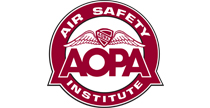Tragic turn at Sun n Fun '07 kills two
(MIA07LA077)
 Traveling by air to a busy fly-in event can be exhilarating and harrowing at the same time. Crowded airspace, unfamiliar procedures, and anxious ATC calls can catch a pilot off guard and lead to some ill-advised flying in an effort to toe the line. When that flying includes aggressive, cross-controlled maneuvering at low altitudes, tragedy often ensues—sometimes repeatedly.
Traveling by air to a busy fly-in event can be exhilarating and harrowing at the same time. Crowded airspace, unfamiliar procedures, and anxious ATC calls can catch a pilot off guard and lead to some ill-advised flying in an effort to toe the line. When that flying includes aggressive, cross-controlled maneuvering at low altitudes, tragedy often ensues—sometimes repeatedly.
On April 16, 2007, an amateur-built Express aircraft overshot the base-to-final turn when arriving at the annual Sun ’n Fun fly-in in Lakeland, Fla. After being admonished by the tower controller, the pilot banked aggressively, stalled, and plunged into terrain half a mile from the runway. Both he and his passenger were killed.
The VFR flight had left Bacon County Airport in Alma, Ga., earlier that day bound for Lakeland Linder Regional Airport. Special arrival procedures had been established via notam for the fly-in event. Runway 9/27 at Lakeland was restricted to show aircraft; transient arrivals were to land on the parallel taxiway, dubbed Runway 9L/27R for the duration of the event. Moreover, aircraft were instructed to approach the airport from the north and enter the traffic pattern at a 90-degree angle.
The pilot had flown to Sun ’n Fun only once before—in a different, less-powerful airplane 12 years prior. On the day of the accident, he approached Lakeland Airport shortly after 2 p.m. in his 310-horsepower Express and was instructed by ATC to turn downwind for Runway 27R. Following a wide left turn, the airplane flew a tight right downwind until instructed to turn base with a clearance to land. Shortly thereafter, the tower controller issued a terse warning: “White low-wing, turn it on in. Don’t overshoot 27R.”
The aircraft immediately entered what a witness described as a “snap roll type maneuver,” banking 90 degrees to the right in an effort to reestablish runway centerline. Another witness stated that the airplane “appeared to overshoot the final, and turn hard to the right in what appeared to be a classic base-to-final stall.” The aircraft then spun to the ground and erupted in flames.
The NTSB followed several leads early in their investigation, including loss of engine power due to inappropriate use of the auxiliary boost pump or fuel contamination. (The latter angle was pursued after the pilot’s credit card statement showed a charge for Jet A fuel at Bacon County Airport. This was later determined to be an error in billing, not filling.) The board eventually concluded that the engine never lost power, but rather the pilot’s failure to maintain airspeed while turning base to final led to a stall, causing the airplane to crash. His lack of recent experience was cited as a contributing factor.
In an eerie twist, the accident turned out to be the mirror image of a crash that occurred at Sun ’n Fun 11 years earlier. In April 1996, an arriving Piper Comanche flew the opposite traffic pattern, setting up for landing on Runway 9L. The pilot overshot the base-to-final turn, banked aggressively, and entered a left spin at 250 feet agl. All three people on board perished.
According to the AOPA Air Safety Institute’s 2008 Nall Report, maneuvering flight remains the leading cause of fatal general aviation accidents. In the traffic pattern, base-to-final is a dangerous place. Airspeed is slow and altitude is low. If the pilot overshoots the extended runway centerline during the turn, the tendency is to use aggressive banking and rudder to bring the nose around. When opposite aileron is applied to arrest the bank, the airplane immediately becomes cross-controlled. Airspeed and stall speed converge rapidly in the skid, setting up a lethal stall/spin scenario.
Staying ahead of the airplane is always important, but it becomes absolutely critical when following unfamiliar procedures in a high-performance aircraft. Falling behind the machine is difficult enough without the pressure of a crowded pattern and overstressed controllers. If something isn’t right, don’t attempt a drastic correction. Admit the problem to ATC and request a go-around or pattern departure. This might mean a follow-up chat with the tower or filling out a NASA form, but it sure beats repeating history.